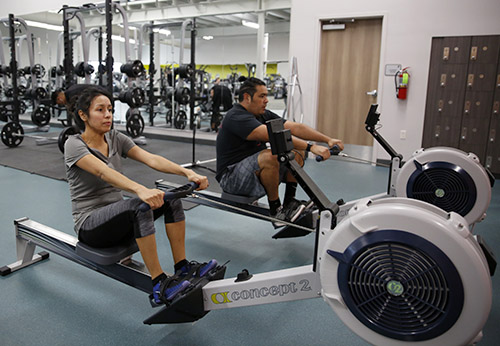Workout Buddy
One of the most motivating ways to workout is with a workout buddy. Getting a group or pair together can keep all parties accountable for showing up as well as working a little harder. With the help of a friend we can also help push ourselves just a little bit farther. On our own, it may be too risky to try a heavier weight, but knowing that someone else is there to provide a boost when the going gets a too tough can often be enough to have the confidence to try something you may not have been willing to try before. This is referred to as spotting. The position of the spotter to the lifter plays an important role when making sure that both of you are safe.
Any and most exercises can be modified, assisted and spotted. Ask a trainer for help or research online before getting involved in an intense workout that requires assistance. This article will cover just a few basic exercises.
Squats:
For barbell squats, stand directly behind the person (about a foot distance) allowing enough space for you to step back with them after unracking the bar. The distance should be enough to provide a sense of security should the weight be too much but without making any physical contact with their body. When the person indicates the need for assistance or if they are showing signs of slowing down or struggling, be ready by hooking your arms just under theirs- forearms next to their lats. This puts you in a position similar to theirs and, if needed, the two of you can lift the weight together.
Bench Press:
There are two different points of assistance for a bench press. The first is to assist in the lift-off. This is the initial unracking of the bar. Communicate with the lifter if this is something he/she wants. Standing at the head of the bench, ask if the lifter is ready and give a clear and concise countdown. Both parties lift the bar at the same time. The second point to spot is the obvious helping to bring the bar back up. Spotting a bench press can be a bit tricky. It doesn’t take much from the spotter to change the outcome of the lift so only touch the bar and pull if it is requested or if the bar falls or begins to lower back down towards the chest. A slow, or shaky struggle is not indicative of a failed attempt. If a spot is needed, to provide a stronger assist, use a “mixed grip” or one hand over/ one hand under grip. You may only need to provide a gentle pull, but there is a chance you may need to take over for most or all of the weight.
Overhead Press:
There isn’t anything too complicated when assisting an overhead press unless you are using dumbbells and asked to hand over the weights for the initial lift. Hold the weight by the weighted sides, not the handle to provide the space need for for your teammate to grasp the dumbbell. If assistance is needed during the set you can provide back-up by pushing up from directly under the elbows. It is also acceptable to push up from the wrists. Whoever is on the working set should also understand that it is important to maintain a firm grip on the weight at all times.
Be Aware
It is common courtesy only to provide help when requested by the lifter (this means never making contact with the person, weight or the bar) but be remain alert, ready and aware of any signs of struggle in case your partner doesn’t vocally ask for help. The more you work together the easier it will be to read each others signs. Know when to motivate to try harder and when to step in for help!
